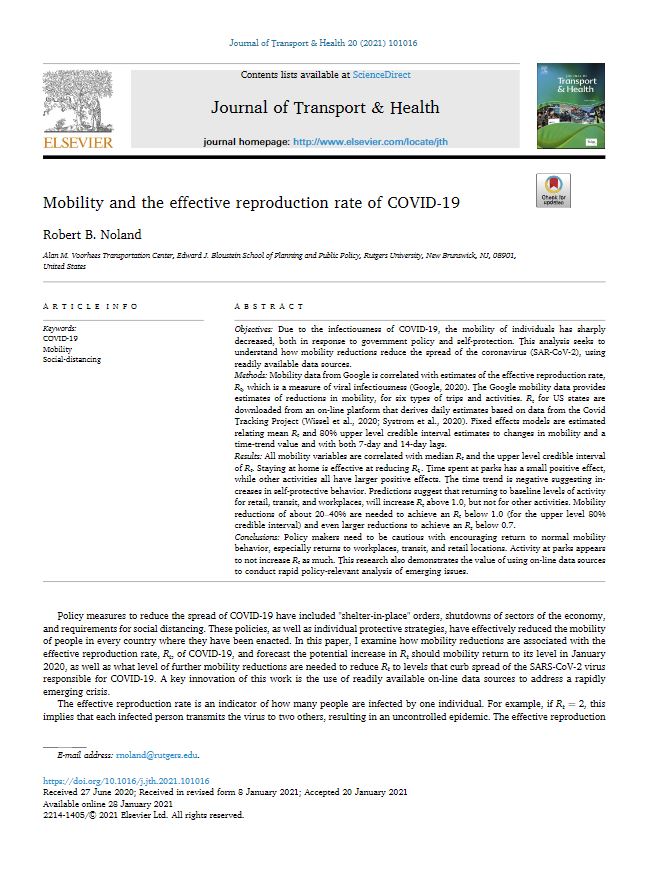Abstract
In an effort to understand how changes in mobility are associated with the spread of the coronavirus, distinguished professor Robert Noland used mobility data from Google correlated with estimates of the effective reproduction rate, a measure of viral infectiousness, in “Mobility and the Effective Reproduction Rate of COVID-19,” published in the Journal of Transport and Health. The Google mobility data provides estimates of reductions in mobility for six types of types of activities and is available for all states and the District of Columbia.
The effective reproduction rate, Rt, is an indicator of how many people are infected by one individual. For example, if Rt =2, this implies that each infected person transmits the virus to two others, resulting in an uncontrolled epidemic. Rt can be affected by policy, such as those that have been enacted to reduce mobility (e.g. state “shelter-in-place” orders and capacity restrictions on indoor activities). Achieving a value of Rt <1 is a necessary condition to stop the spread of any virus.
Results show a strong correlation between mobility and Rt. Staying at home reduces transmission while retail/recreational activity, such as eating in restaurants, office work activities, and public transit usage are all associated with increases in transmission of the virus. Shopping at grocery stores and pharmacies has a smaller association, while effects associated with parks are minor. Implications for reducing the spread of the coronavirus are that the reductions in mobility have been effective, but also need to be maintained for longer periods. Mobility reductions of about 20-40% are needed to achieve an Rt below 1.0 (for the upper level 80% credible interval) and even larger reductions to achieve an Rt below 0.7.
While lockdowns clearly affected mobility, they largely coincided with self-protective measures that businesses and individuals were already taking. Mobility began to gradually increase even before the lockdowns expired. Other unmeasured factors may reduce the effective reproduction rate over time (e.g. the widespread wearing of face masks).
Mobility reductions and social distancing are useful policies for reducing peak case-loads, i.e. to “flatten the curve” and avoid overloading health care resources. Policymakers need to be cautious with encouraging return to normal mobility behavior, especially returns to workplaces, transit, and retail locations. Activity in parks appears to not increase Rt as much. This research also demonstrates the value of using online data sources to conduct a rapid policy-relevant analysis of emerging issues.
